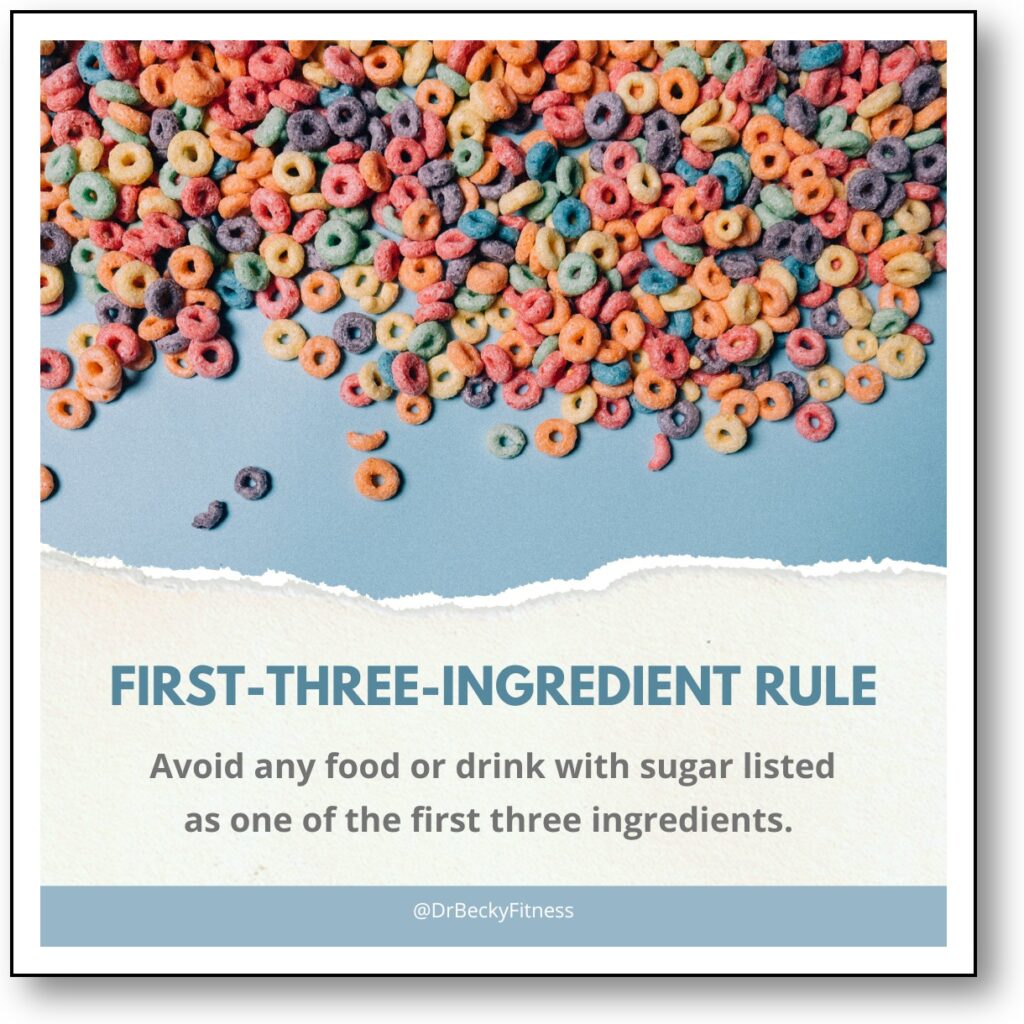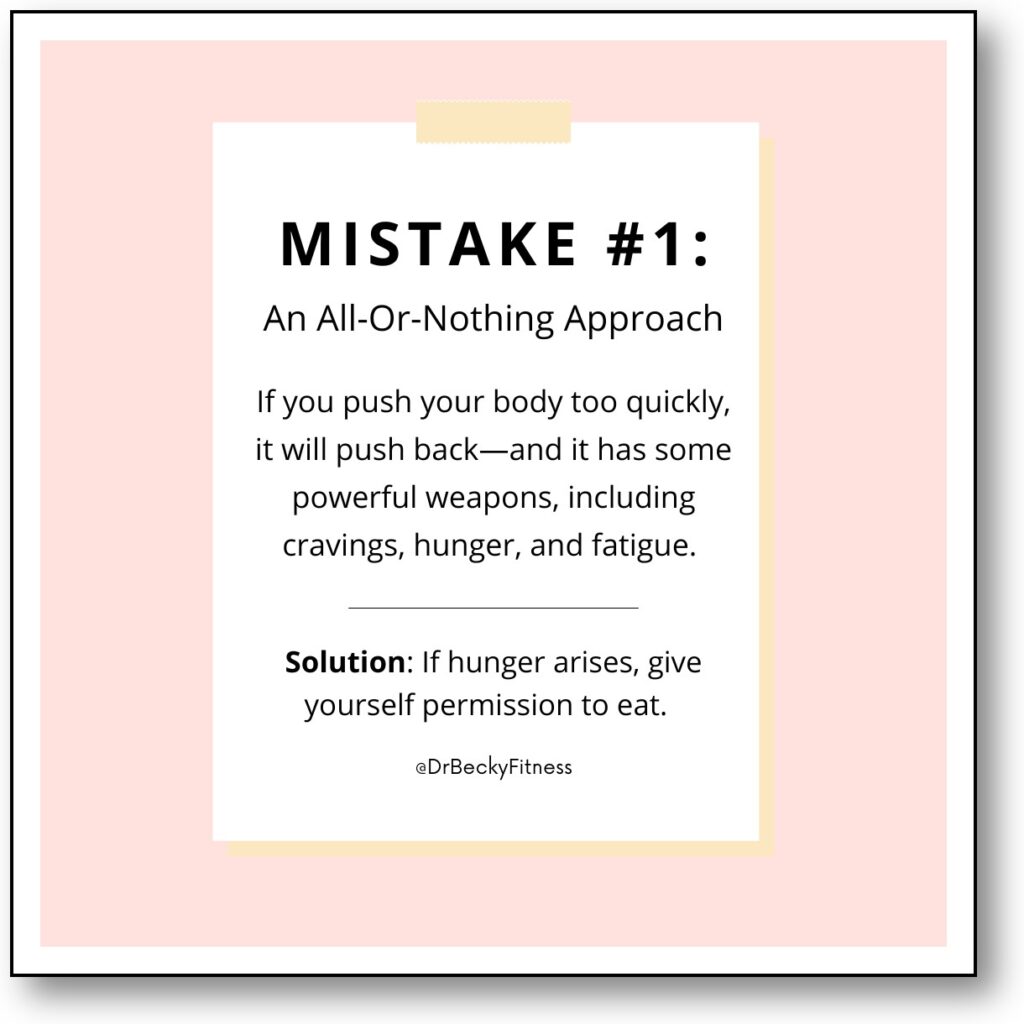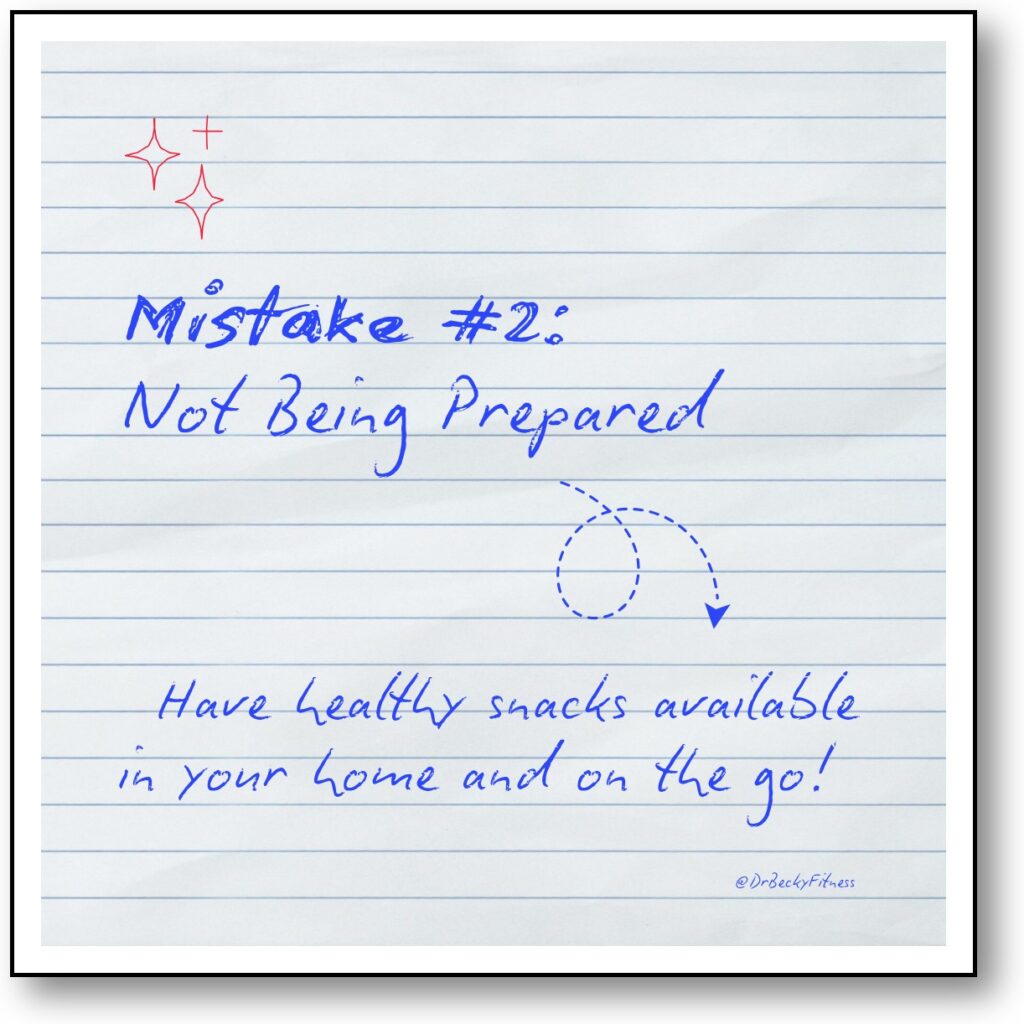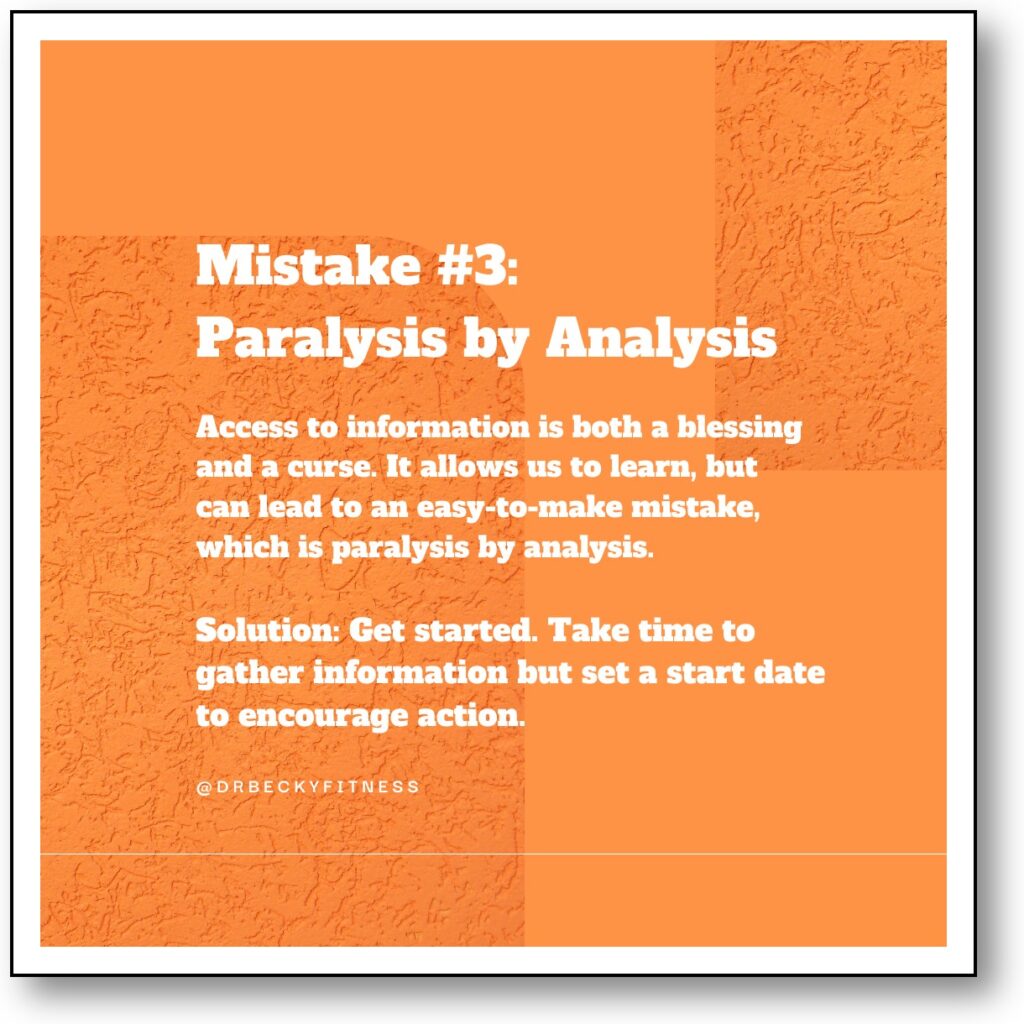
Go SUGAR-FREE for 1 Week – Here’s The Plan
Video | The First-Three-Ingredient Rule | Mistake #1: An All-Or-Nothing Approach | Mistake #2: Not Being Prepared | Mistake #3: Paralysis by Analysis | Takeaway
If you struggle with getting sugar out of your diet, you’re not alone. It is a challenge for many people, and it’s not a lack of willpower. Sugar is quick energy that causes the release of a “feel-good” chemical in your brain called dopamine. Over time, your brain starts craving that hit, making the desire to eat sugar stronger and stronger.
How do you break free without the withdrawal symptoms breaking you? I have been helping people reach that freedom for years through my blog, and I’ve even written a book on the topic.
This blog post shares the one rule to follow for a successful sugar-free week and the three most common mistakes to avoid.
Zero Sugar Plan – At-A-Glance
- Eliminate sugar from your diet by adhering to the First-Three-Ingredient Rule: avoid any food or drink with sugar listed as one of the first three ingredients.
- Whole fruit can be consumed, but avoid dried fruit and fruit juice due to their concentrated sweetness.
- Noncaloric sweeteners can be consumed, but avoid high-fructose foods like honey, agave, and maple syrup.
- Common mistakes to avoid when eliminating sugar from your diet include adopting an all-or-nothing approach, neglecting preparation, and excessive overthinking that hinders taking action.
Go SUGAR-FREE for 1 Week – Here’s The Plan [Video]
In this video, you’ll learn…
- How to avoid sugar by keeping an eye on the ingredients.
- Three mistakes people make when trying to quit sugar.
- Solutions to each of those mistakes.
The Challenge
The biggest challenges with sugar are that the more of it you eat, the more of it you crave, and when you give it up, you often end up with withdrawal symptoms, including headaches, irritability, fatigue, and intense cravings. It is those withdrawal symptoms at the beginning of the journey that stop a lot of people.
I am not going to tell you that if you get through a sugar-free week that you’ll no longer crave sugar, but you will see sugar in a different light. It will be less of a need and more of a want. That shift gives you the first measure of control that will build over time.
The First-Three-Ingredient Rule
To be successful, you’ll follow the First-Three-Ingredient Rule, meaning you’ll avoid foods and drinks with sugar listed as one of the first three ingredients.
That is the rule to keep in mind for your sugar-free week. Of course, food manufacturers can’t make it that easy on us. There are a lot of alternate names for sugar. And, you likely have some questions about things like fruit and sugar substitutes. Let’s look at the fine print.

Alternate Names for Sugar
There are more than 60 different names for sugar listed on food labels.
There are some tricks to picking them out. For instance, if the ingredient has the letters “ose” or the word “syrup” at the end (i.e., dextrose, high-fructose corn syrup), it is likely a sugar alias. But honestly, the best approach is this: When in doubt, do without. In other words, if you’re not sure if a food contains added sugar, don’t eat it.
Fruit
A piece of fruit does not come in a package, so our First-Three-Ingredient rule does not apply to fruit. Therefore, fruit is permitted if it is whole and unprocessed. However, avoid dried fruit and fruit juice, as these contain concentrated sugars.
Sugar Substitutes
Speaking of concentrated sugars, I also recommend avoiding honey, agave, and maple syrup. These sweet substitutes come from natural sources, but they get much of their sweetness from fructose, which is a type of sugar that’s easily metabolized into fat by your liver. Because of that fact and the intense sweetness of these products, you’re encouraged to avoid them.
However, it is a different story for noncaloric sugar substitutes, such as allulose, monk fruit, and stevia. While you will not gain a lot of health value from these sweeteners, they can be used as a crutch at the start of your journey to help wean yourself off sugar.
The same goes for artificially sweetened drinks like diet soda. These types of drinks are not healthy. They provide sweetness without nutritional value, which is detrimental in the long term, but in the short term, it can help you avoid relapsing into a sugary diet.
That last statement may be controversial, but it leads us to the three mistakes that prevent people from making the transition to a sugar-free life.
Mistake #1: An All-Or-Nothing Approach
The goal is to get sugar out of your diet. When you set a goal, it is important to have boundaries and strictly adhere to those boundaries; otherwise, you just spin your wheels and never make progress. Yet, as I mentioned, you can have fruit and noncaloric sugar substitutes during your sugar-free week.
For some of you, that seems like too much wiggle room. However, I would argue that avoiding sugar is a unique goal because there’s a mix of biological, psychological, and social components that must be dealt with. Therefore, having an all-or-nothing mindset from the start works against the completion of your goal.
Along that same line, when motivation hits, it is common to grow a singular goal, like avoiding sugar for one week, into a multi-prong goal. Instead of just reducing sugar, we also reduce our overall food intake, start fasting, and add intense exercise. There is nothing wrong with those practices, and as time passes, they add to your progress. But if you push your body too quickly, it will push back—and it has some powerful weapons, including cravings, hunger, and fatigue.
Solution: When You’re Hungry, Eat
Instead of forcing change, allow change to happen by giving your body what it needs to succeed. Your goal for this week is to avoid added sugar. If hunger arises, give yourself permission to eat.
When you eat a meal, fill your stomach so you can delay hunger and keep your attention off food. Don’t focus on calories at this point. That is fine-tuning. When your body has adapted to your new sugar-free diet, hunger will diminish naturally. In other words, give your body what it needs today, and it will give you what you want tomorrow.

Mistake #2: Not Being Prepared
Giving your body what it needs today also means being prepared for the day. When life gets stressful, we want comfort and convenience. If you do not have satisfying, easy-to-grab healthy snacks available, it is too easy for emotions to take over, and good judgment flies out the window.
Solution: Create a Hunger Survival Pack
In my book, Zero Sugar / One Month, I talk about creating a hunger survival pack by gathering ready-to-eat, low-carb foods that contain protein and fat. This combination of nutrients stabilizes blood sugar, preventing crashes that drive cravings.
If you travel during the day, you can make a physical hunger survival pack by placing shelf-stable foods, like raw or lightly toasted nuts, individual packets of almond butter or natural peanut butter, and beef sticks, into a portable bag.
But you don’t need an actual pack. You can collect healthy items on a shelf in your refrigerator. Then, when hunger hits, eat. Here are some suggestions: Deviled eggs, precooked meats, presliced cheese, cut veggies with full-fat dip or cream cheese, full-fat yogurt or cottage cheese with berries, stuffed olives, and kimchi.
By stocking up on these easy food choices before starting your sugar-free week, you are helping your body transition from quick-energy foods to ones that sustain energy over time. It takes effort to make that transition, so you must help your body through by feeding it.

Mistake #3: Paralysis by Analysis
We live in a time when information is easy to access. Whatever goal you want to achieve or project you want to tackle, there’s a video or article on that topic. In fact, there are likely hundreds, maybe thousands. Access to all of this information is both a blessing and a curse. It allows us to learn, but can lead to an easy-to-make mistake, which is paralysis by analysis.
Solution: Get Started
Whenever you start something new, you need to go through a learning process. But at some point, you need to shift from gathering information to taking action.
Think about learning how to drive a car. First, you gathered information by taking a driver’s education course and watching your parents drive. Those were necessary steps, but at some point, you needed to sit down behind the wheel and drive.
You made mistakes, but are likely pretty comfortable with driving now because you learned by doing. Changing your diet is no different. Take time to gather information and stock your hunger survival kit, but don’t forget to set a start date to encourage action.

Takeaway
The hardest part of breaking free from sugar is getting over the withdrawal period. Those symptoms will not completely go away in a week, but the first week is the worst, and you will feel more in control once you clear that hurdle.
Ready to tackle a week without sugar? Pick a start date on your calendar, prepare a “hunger survival kit” with healthy snacks within easy reach, and keep your focus on this singular goal. There may be additional goals you want to achieve, but take care of this issue today, and you’ll be better prepared for those challenges tomorrow.
About the Author
Becky Gillaspy, DC, is the author of The Intermittent Fasting Guide and Cookbook and Zero Sugar / One Month. She graduated Summa Cum Laude with research honors from Palmer College of Chiropractic in 1991.



